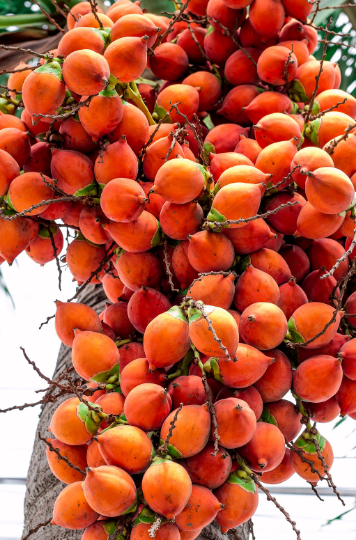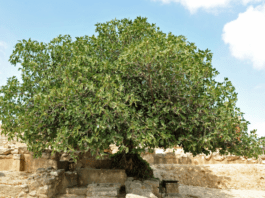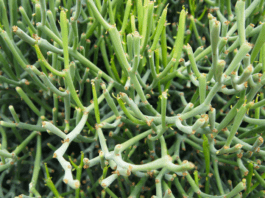What Is Areca Palm

While regarded primarily as an aesthetic plant, the Areca palm embellishing your home is a fantastic air humidifier and toxin extractor.
The Areca Palm, one of the most prominent nursery plants, adorns your home with an exotic character. A quick-growing plant that requires little care adds a tropical touch to your interior.
The Areca palm keeps the air wet and fresh, making it excellent for tropical climates.
NASA assigned the Areca a high score of 8.5 as the ideal indoor plant due to its ability to eliminate chemical contaminants throughout the day.
The areca palm (Dypsis lutescens) is popular due to its excellent air-purifying properties and adaptability to varying light levels.
However, they can remind many employees of the workplace, where they are frequently used to conceal columns and printers.
- Light or in the shade? Both
- Where shall I place it? In your bedroom or living area, where the cleaner air and calming character of its arching fronds can help you.
- How do I keep it alive?
This palm is adaptable in its light requirements since it can tolerate both soft shade and direct sunlight.
However, like with all plants, it flourishes in more great sunlight. It also prefers high humidity levels, so water it weekly or set the pot on a tray of moist pebbles.
The leaf tips will likely get brown if the air is too dry. Allow only the top 5cm of soil to dry out and water once per week during the winter and twice per week during the summer.
How To Care For Areca Palm
When grown outdoors, it is essential to select a planting place with adequate drainage. A palm’s roots can readily rot when the soil is saturated. 2 When grown inside as a houseplant, a container with enough drainage is required.

In regards to routine maintenance, you should water your areca palm anytime the soil becomes dry. Keeping outdoor palms moisturized is particularly vital during hot and dry weather conditions for their health.
Unless they are put near a very bright window, indoor palms rarely receive sufficient light. Therefore, exposing your palm to diffused sunlight outdoors in warm weather can be beneficial.
Throughout the growing season, feed both indoor and outdoor palms. These palms do not require extensive pruning or trimming.
Wait until dying fronds are predominantly brown before removing them, as they still contribute to photosynthesis.
Fertilizer
The areca palm is a strong feeder and must be fertilized from spring to early fall using a liquid fertilizer according to the recommendations on the product label. During late autumn and winter, when the plant is dormant, it should not be fed.
Propagating Areca Palm
It is possible to propagate areca palm by root division, which would produce a luxuriant plant faster than from seed, however cuttings will not work.
Root division can be performed at any time of the year, but the plant is most robust in the spring.
To divide a potted areca palm through root division:
- Select an established plant with numerous stems.
- Water thoroughly the day before division to loosen the roots and dirt.
- Remove the palm from its container by tapping the container’s sides to dislodge the root ball.
- Shake the earth away from the roots. Rinse soil from roots so that the roots of each stem are visible.
- Select four to five stems and separate them from the parent plant using a sharp knife.
- Place the separated stems in a container with a combination of two parts potting soil to one part coarse sand.
- Place the container in bright, indirect light (not direct sunlight) and keep the soil moist, but not drenched.
Growing Areca Palms From Seed
Additionally, areca palms can be cultivated from seed. It is uncommon to get areca palm seeds in garden centers, but you can collect seeds from the fruits that develop after the yellow flowers bloom.

If you propagate using seeds, germinate them at home by placing them in seed-starting mix with a light covering.
In general, the older, orange-colored seeds have a higher germination rate than their younger, greener counterparts.
Approximately six weeks are required for germination when the soil temperature is over 80 degrees Fahrenheit and the relative humidity is reasonably high.
As you wait for germination, keep the seed-starting mix moist but not soggy, and then continue to keep the seedlings moist as well.
When the seedlings have a few leaves, plant them outdoors 10 feet apart, or plant three to four seedlings in a 12-inch container for a complete appearance.
Repotting Areca Palm
Every two to three years, areca palm houseplants require repotting. The plant prefers a small container, and dense roots assist control its size.
The primary purposes of repotting are to replace old potting soil and to remove fertilizer salt deposits from the soil and sides of the pot.
Add a handful of clean builder’s sand to a palm potting soil or a general purpose mix.
Take care to plant the palm at the same depth as in the previous container. Too-deep planting can result in significant injury.
Don’t attempt to spread the roots because they are fragile. After filling in the area surrounding the roots with soil, compact the earth with your hands to ensure that it is well packed.
Remove entrapped air by flooding the container with water and pressing down again. Add additional soil if required.
Common Plant Infestations and Diseases
Areca palms are not seriously affected by pests or illnesses. Occasionally, a palm is infected with deadly yellowing, a bacterial illness transmitted by insects that kills fronds and finally the entire palm.
Outdoor palms are more likely to contract this disease, and since therapy is frequently ineffective, it’s advisable to remove the palm before it spreads.
Common houseplant pests, such as mites, aphids, mealybugs, scale, and whiteflies, can cause foliage damage and discoloration on indoor areca palms. Treat any infestation without delay.
Interesting Fact
This common houseplant was formerly threatened with extinction in its native environment of Madagascar and is on the IUCN (International Union for the Conservation of Nature).





